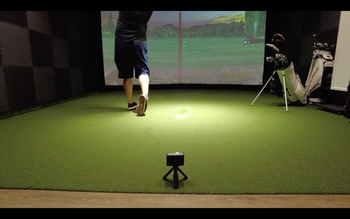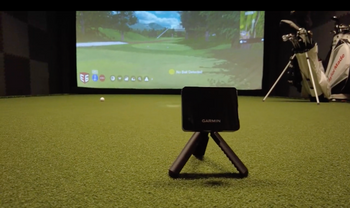You'll encounter eight primary grass varieties when you're out on the links, and each one's specifically chosen for certain weather patterns and course conditions. Bentgrass rules the roost up north, giving you those buttery smooth greens you love rolling putts on. Down south, Bermudagrass takes over - it's tough as nails in the heat and bounces back fast after you chunk one.
Perennial ryegrass gives you those sweet-looking striped fairways in cooler areas, while Zoysia feels like you're playing on carpet with its plush texture and water-saving abilities. Fescue's the tough guy that doesn't need much babying or water, Poa Annua spreads like crazy but makes putting a real experience, Kentucky Bluegrass stays strong without breaking the bank, and Seashore Paspalum loves soggy conditions - knowing which one you're playing on totally changes how your shots react.
Table of Contents
Popular Grass Types You'll See on Courses
Courses display an impressive selection of turf varieties, with each one picked to survive everything from early bird tee times to the weekend rush of hackers leaving divots everywhere. Cool-weather grasses take over in northern regions, while their warm-weather cousins dominate down south.
Kentucky Bluegrass acts like the reliable pickup truck of northern turfs - it's dependable, doesn't need much fussing, and works great in rough areas where superintendents don't want to blow their budgets. Perennial Ryegrass delivers that smooth feel you'll notice on high-end tees and fairways.
Down where it's toasty, Bermuda Grass is king! This stuff takes a beating from constant play and pops right back from those crater-sized divots. Zoysia brings that country club vibe with its velvety surface and ability to survive dry spells, which is why fancy courses love it. Bentgrass lets greenskeepers cut it super short without killing it, perfect for those lightning-fast greens. Fescue needs less cutting and watering than its buddies, giving you those firm, springy playing surfaces.

How Different Regions Pick Their Turf
Once weather enters the equation, you'll see some interesting trends in how courses across America choose their grass. The Southwest takes the cake for mixing it up with different varieties, even though bermudagrass still owns most of the real estate out there. Water shortages have forced superintendents to ditch water-hungry bentgrass for tougher alternatives.
Up where it freezes, courses stick with cold-weather warriors like bentgrass and ryegrass that won't die when temps plummet. Hot zones go for sun-loving bermudagrass and zoysiagrass instead. Places struggling with water pick smart options like seashore paspalum. Tall fescue's become huge because it laughs at droughts and cold snaps.
Check this out: overseeded areas have shrunk by more than 37,000 acres since '05, and total maintained grass dropped 5.4%. The Transition zone shows this big-time with overseeding down 64%. Weather's definitely calling the shots on these choices!
What Makes Each Grass Special
America's courses rely on five heavy hitters, and they've all got their own quirks. Bentgrass digs cold weather and has super thin blades that love being buzzed short - that's why all the fancy greens use it. Bermuda grass eats up heat and shrugs off dry spells, making it the go-to for hot courses. But watch out: it's got grain that'll mess with your putts. Poa Annua spreads fast but makes the greens play weird with those annoying seed heads. Its wimpy roots need tons of water management, especially when it's dry. Ryegrass digs cooler weather and makes those sweet striping patterns, but it wimps out when summer hits. Zoysia works in different weather while giving you that thick, padded surface that forgives chunky shots and barely needs water since it's drought-tough. Bottom line, picking the right grass makes or breaks how the course plays and stays healthy.
Taking Care of Different Grasses and How Long They Last

Underneath those perfect fairways, there's a crazy amount of work that makes regular courses look different from tour-level tracks. Bent grass needs the most babying - you're talking about mowing every single day at super low heights and always watching for diseases. Think of it like having a Ferrari that turns heads but drains your wallet, keeping it running!
Fescue's totally different, getting by with barely any water and shrugging off all those footprints. Bermuda and Zoysia just laugh when it gets hot enough to cook bent grass. Weather decides everything - bent grass wants those crisp mornings, but seashore paspalum actually digs soggy spots that would kill other types. Perennial ryegrass gets thrown on sleeping Bermuda to keep things green when it cools down. Your wallet will love you for picking water-smart options instead of needy, expensive varieties. Course crews use special gear to keep these different grasses playing their best.
How Different Grasses Change Your Game
Whatever's under your spikes changes how you play every single shot, making your ball either zoom away or stick like it's in quicksand. Bermuda gives you a tight surface where you need precision - better grab those lower-lofted sticks to work through its firm feel. Bentgrass greens let balls roll true and steady, but they're faster so you'll see more break. Zoysia's got this cushy bounce that props your ball up nice, making you feel good about those approach shots. Playing Poa Annua? Prepare for weird bounces that'll keep you guessing all day long. Ryegrass gives you consistent ball action and helps you spin it out of the rough. Fescue's the real beast - its thick growth cuts your distance and makes crazy lies that'll test how well you can adjust! Knowing what you're playing on before your round lets you pick better clubs and plan smarter for way better scores.
How Course Grasses Handle Weather and Nature
Sure, different turfs affect your shots differently, but they've also gotta handle everything the weather gods throw their way - and believe me, they don't hold back! Look, picking grass that matches your weather is what separates gorgeous courses from patchy disasters.
Up where it's cold, bentgrass is boss since it shrugs off freezing weather, even though it hates hot summers. Down south, bermudagrass and zoysia love the heat and don't care about droughts - zoysia just needs 1-1.5 inches per week! Beach courses love seashore paspalum because it doesn't mind salty spray and recycled irrigation. Weather's getting crazier, so turf scientists keep working on stronger varieties that roll with the punches.
Picking the Best Grass for Where You Play
Now that you know how different turfs deal with weather, it's time to zero in on finding the ideal match for your exact location - mess this up and your course is toast! Initially, look at your area's weather. Southern courses go nuts for Bermudagrass since it loves heat and handles super short cuts perfectly. Up north, Bentgrass usually wins - it digs cool temps and doesn't guzzle water like other types. West Coast spots often pick Poa Annua for slick greens and heavy play resistance. Listen, you can't beat nature. Zoysia's awesome at surviving droughts but takes forever to grow, and Ryegrass looks great when it's cool but folds under heat.
Frequently Asked Questions
What's It Gonna Cost to Put in Different Course Grasses?
Getting new grass down changes big-time depending on what you pick! Bermuda sod runs between fifty cents and a buck fifty per square foot, but fancy bentgrass hits $1-$3. Want to save cash? Seed it instead - ryegrass and Poa annua just cost 10-30 cents per square foot. Zoysia's in between at $1-$3, but listen: it'll cut your maintenance bills later since it's tough as nails.
Can You Mix Different Grasses on One Course?
Absolutely, courses mix grasses all the time! Actually, most places use multiple types on purpose. Bentgrass usually goes on greens for those true rolls, and fairways might blend Bermudagrass with Zoysiagrass for extra toughness. Northern spots mix Poa Annua and Bentgrass together, while transition areas combine hot and cold grasses to deal with changing seasons all year.
How Long Before New Course Grass Is Playable?
You're looking at 3-6 months before that fresh grass can take regular play. Here's what happens: seeds pop up in 7-14 days, baby grass gets going in 2-4 weeks, and it fills in thick after 6-12 weeks. But hold up - the grass still needs those additional months building tough roots that won't get wrecked by spikes, carts, and divots.
What Bugs and Diseases Hit Different Course Grasses?
Each grass deals with its own set of problems regarding diseases. Bentgrass gets hammered by anthracnose, pythium blight, and dollar spot - especially if nitrogen's running low. Bermudagrass fights pythium blight and brown ring patch when it's muggy out. Northern grasses like ryegrass and fescue get brown patch, making those ugly circles with dark edges you've definitely seen before!
Any Green Options Instead of Regular Course Grass?
You bet there are earth-friendly choices that'll make courses greener in more ways than one! Local grasses like buffalograss barely need any water or chemicals compared to regular stuff. Kurapia's awesome for dry spots, and mixing in clover actually helps bugs that are good for the environment. Get this - natural fertilizers using seaweed and humate combined with helpful bacteria can ditch the nasty chemicals, saving cash and keeping water clean.
Conclusion
Picking the perfect grass for a course goes way beyond just looking pretty - it's all about making the game play right! You've gotta juggle weather, what you can spend on upkeep, and what players want. From high-maintenance bentgrass that needs constant care to bulletproof Bermuda that loves the heat, every pick affects how players enjoy the track. Just remember, what works somewhere won't work everywhere, so pick what fits your place and what you're trying to do.





